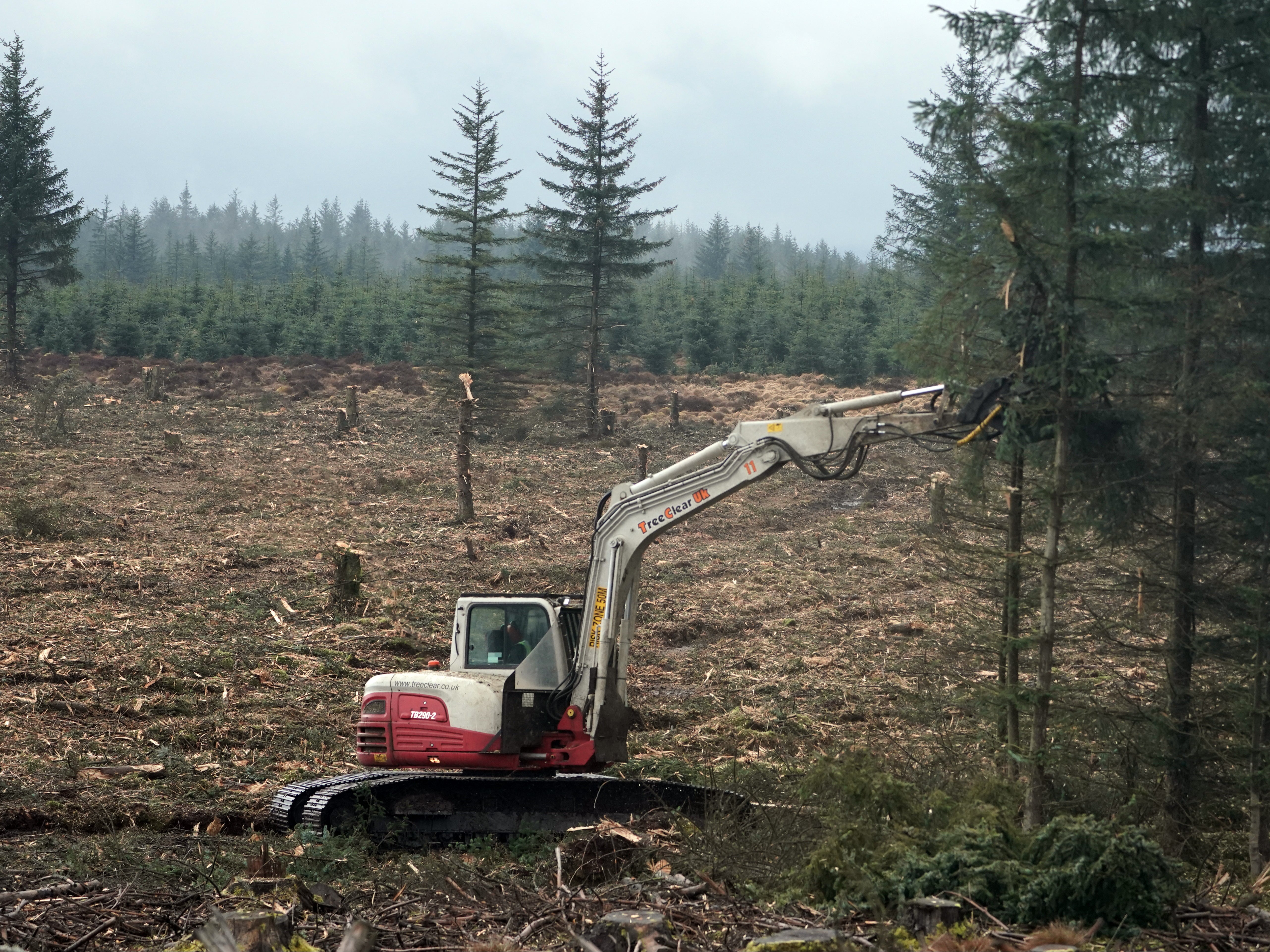Tree mulcher machines used to restore ‘nationally important’ peat habitat
Removal of spruce in Border Mires could see bog naturally combat effects of climate change once more

A company helping to restore one of the UK’s most important peat habitats will have to rip down dozens of spruce trees to get the job done.
The Border Mires network, near Kielder Water in Northumberland, was formed 12,000 years ago as the Ice Age ended.
Spruce trees were planted in the mires after the Second World War to meet high demands for timber. But drainage installed to help the trees grow left the area’s bogland dry and shielded it from the necessary sunlight to allow rare plant species to grow.
Forestry England, which manages the nation’s government-owned forests, will now restore the bogs using tree mulching machines, designed to rip down the spruce in seconds.
The machines’ wide tracks stop them sinking in the bog and their powerful cutting discs can turn trunks into chips which are then left in the land to decay. Once an area is cleared the drains will be blocked and the mire will be allowed to fill with water again, according to the body.
While the government is elsewhere busy planting trees to combat climate change, not ripping them up, bogs are able to store vast amounts of carbon which makes them a useful tool for easing the effects of the crisis.
When trees are planted in bogs, however, like they were in the mires, the fertiliser added to help them grow can cause peat to emit carbon rather than store it.
The government was warned last month it needed to speed up plans to restore the UK’s boggy peatlands, with estimates suggesting the areas currently released some 23 million tonnes of greenhouse gas each year.
Wayne Penrose, a Forestry England ecologist who is overseeing the spruce work, told the PA news agency: “These mires are incredibly important. They date back to the end of the last Ice Age, 12,000 years ago, and so represent one of the most natural of all UK habitats.
“Not only do they support a fantastic array of plants and animals, including sphagnum moss, bog asphodel, sundews, dragonflies and wading birds, but they also lock away carbon in the peat.
“Because of this they play a crucial role in mitigating the effects of climate change.”
Forestry England will also remove smaller spruce with chainsaws at three other locations, covering 161 hectares, and blocking 3.5km of drainage channels so the land retains water, which Mr Penrose called “the lifeblood of a bog”.
Angus Lunn, vice-president of the Northumberland Wildlife Trust, said: “It is exactly 50 years since a group of Northumberland Wildlife Trust volunteers, armed with spades, installed the first peat dams in drains in the Border Mires.
“It is a great satisfaction that collectively we have accomplished so much over the years in what was the first major peatland restoration project in Britain.
“Some people may think bogs are not as beautiful as ancient woods or rainforests, but they are an incredibly valuable habitat and part of a rich mosaic of landscapes in Kielder Forest.”
The mires, 15m (49ft) deep in places, hold more liquid than Kielder Water – Europe’s largest man-made lake.
Additional reporting by PA
Join our commenting forum
Join thought-provoking conversations, follow other Independent readers and see their replies
Comments



Bookmark popover
Removed from bookmarks